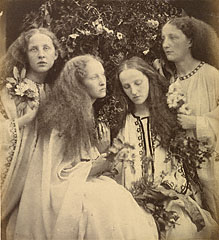This is long overdue.
1. In what ways do you “construct” your identity? In what ways do you “perform” in your daily life?
I think that people construct their identities by choosing anything specific to their outer appearance. Everyone has certain connotations associated with this everyday things, like the way hair is styled or the way make up is applied or even the clothes we wear. People have an idea of who they think they are so they try to appear to fit in that personal view of themselves. It doesn't always transcribe the way that people desire. We perform our daily lives by trying to fulfill these personal missions of what we see ourselves to be.
2. Describe some ways in which your personal culture and social environments are “constructed”.
I really can't think of anything further than the actual act of constructing something, like building it. Maybe its more of the way that we arrange and accumulate these items into our lives.
3. Describe some ways in which your physical environment/space is “constructed”.
The environments that are constructed are usually intended to serve some sort of purpose (or even purposelessness.) They somehow serve a function, and it can be used to cater to any sort of whim.
4. In your daily life, what would you consider to be “real” and what would you consider to be “constructed/fabricated”?
I think the things that I consider to be real are the things that are tangible. Anything else is fabricated in some sort way, whether is natural or unnatural.
5. Describe a narrative tableaux that you might create to be captured by a photograph. A narrative tableaux can be defined as “Several human actors play out scenes from everyday life, history, myth or the fantasy of the direction artist” ( Constructed Realities: The Art of Staged Photography Edited by Michael Kohler , 34).
I think that it will be interesting to shoot pictures during a play. Then it would be up to the discretion of the photographer to try to capture the best moment that embodies what the play is about, or even just a memorable moment from it.
6. Describe an idea for a photograph that includes a miniature stage or still life. A description of such an image is “The tableaux reconstructs events as in the narrative tableaux, but in miniaturized format, using dolls and other toy objects” (Kohler, 34).
After reading this prompt I immediately thought of my childhood and how I used to play with Barbies. I would make up these elaborate homes for them. Since I didn't have all of her accessories, I would substitute items and use things that I had around in lieu of the actual licensed Barbie products. I think it would be interesting to try to reconstruct some of these sets.



























